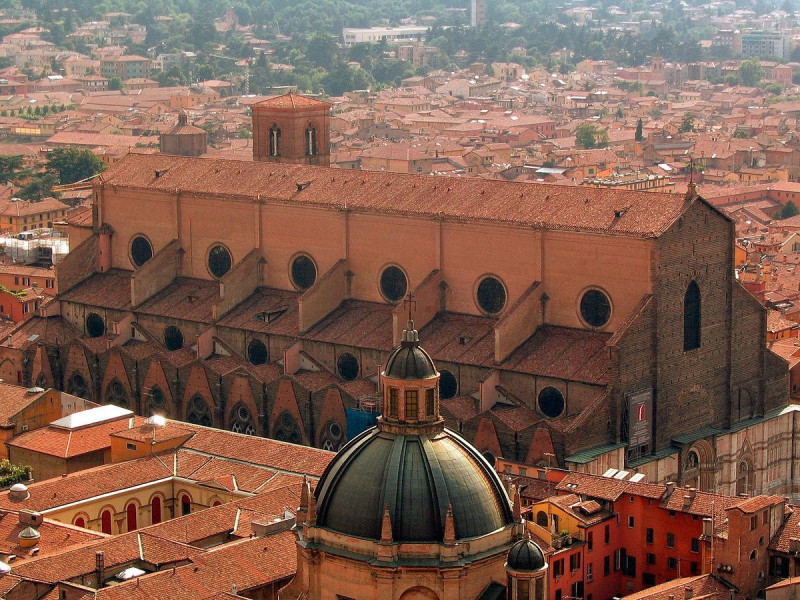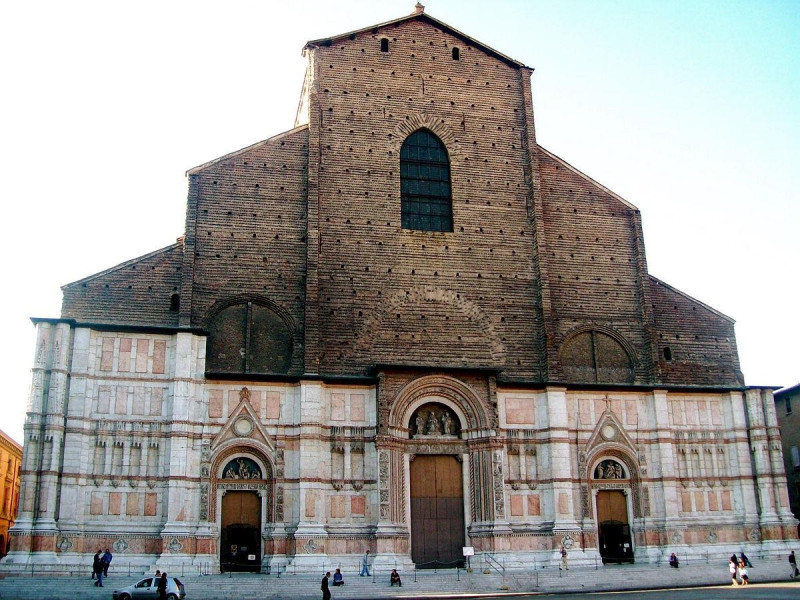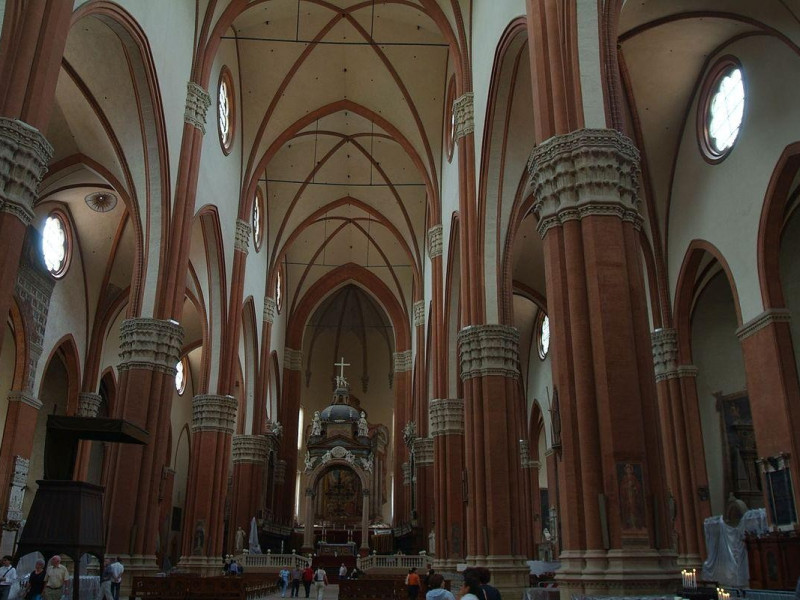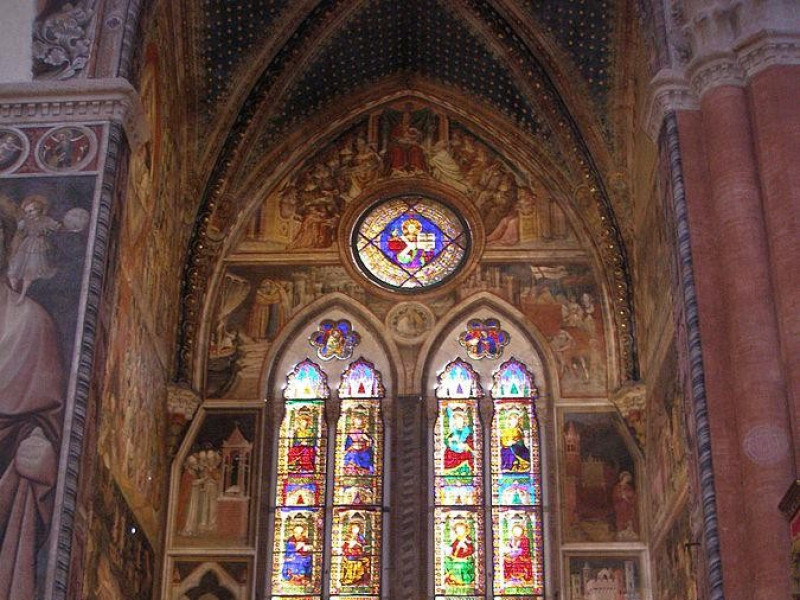Basilica di San Petronio
Dedicated to St. Petronio, patron of the city, its foundation dates back to June 7, 1390 with the laying of the foundation stone. It is the last major late-Gothic work in Italy, which began shortly after Cathedral of Milan (1386). Original plant by Antonio di Vincenzo do not know anything. In 1507 it was in charge of the project, architect Arduino Arriguzzi. In 1508 it is placed on the facade the great statue in bronze of Pope Julius II by Michelangelo. Then the project is interrupted, to resume only in the first half of the seventeenth century, when it was in charge of continuing Roman architect Girolamo Rainaldi. Unfinished facade of St. Petronio is divided into two horizontal bands: the lower one, with marble mirrors performed between the end of the fourteenth century and the beginning of the sixteenth century, and the top, with exposed brick material which should have allowed the anchoring of decorative coating. The bottom consists of a late Gothic base and a superior finish in white Istrian stone and red Verona marble, designed by Domenico Aimo from Varignana, in Tuscan-Florentine style. There are three portals, of which the center is work by sculptor Jacopo della Quercia. The sides are decorated by alternating buttresses and marble windows pierced with windows of the chapels. To the right stands the bell tower by Giovanni da Brensa (1481-1495), 65 meters high, inside which resonates a four-concert bells dating from the fifteenth century. The interior has six grand square-shaped bays, which correspond to the same number of side spans on which open chapels. Among special features of the building, its unusual north-south orientation. In addition to works of art that enrich the chapels, first of all Bolognini Chapel, it is also guarded precious Meridiana by Cassini, which ended in 1657. On both sides of the main altar there are also two pipe organs among the oldest in Italy.




